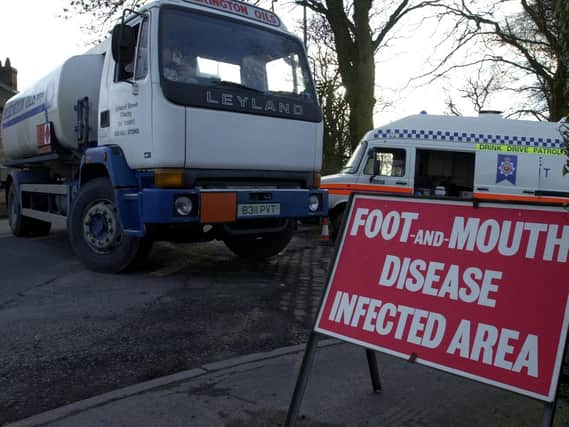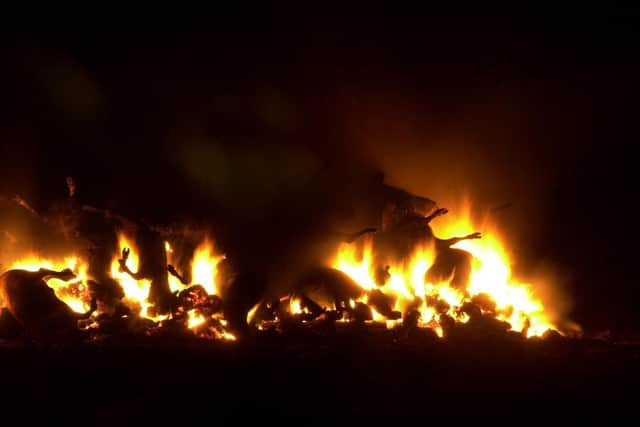'Foot and mouth was a disaster': Lancashire farmers reflect 20 years on from deadly outbreak


When foot and mouth disease hit the farm he managed in Withnell near Chorley, all his cattle and sheep had to be shot. None were spared.
It was so distressing, even for a hardened livestock worker like Phil, that he bundled his wife and children into the car and drove off for two nights in a hotel to get away from the gruesome aftermath.
Advertisement
Hide AdAdvertisement
Hide AdPiles of carcasses were set on fire in the fields at Knowles Farm as Ministry of Agriculture teams set about burning the animals in a bid to contain the highly infectious virus.


“I had to take the family out of the way,” recalled Phil. “We got everything shot and then we got a pass out and went away while the fires were on.”
Knowles Farm was one of several in the Withnell area hit by the biggest foot and mouth outbreak the UK has ever known.
The disease, first identified on February 19, 2001, brought the country to its knees and cost agriculture and tourism an estimated £8bn.
Advertisement
Hide AdAdvertisement
Hide AdCumbria was the worst-hit county, while in neighbouring Lancashire there were 44 farms infected and around 50,000 animals slaughtered before it was finally brought under control more than seven months later.
“It was a disaster at the time,” said Phil who was working as manager at the farm in Chorley Road. “It was stressful, very stressful, especially with having young kids at home.
“We had 350 cattle and about 100 sheep. They all had to be put down, the whole lot. We were covered by insurance. But we only got value for money for the animals, that’s all we got.
“It was a good six months before we could start up again and it took a long time to get back to where we’d been.